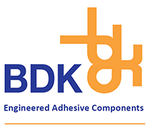Spanning areas of wearables, implantables, and home-based diagnostic systems, demand is driving the rapid increase of both production and availability of remote monitoring devices. As hospitals are becoming increasingly constrained with resources and chronic disease is getting harder to manage, this technology is essential in the healthcare industry.
With positives and challenges that relate to both technical and manufacturing standpoints, painting a clear picture can help healthcare industry professionals stay informed.
At BDK, we contribute to the industry by providing adhesive solutions that enable reliable, patient-friendly devices to be put to market. Let’s explore both sides of remote monitoring technology.
Benefits of Remote Monitoring
One benefit of remote monitoring is the stream of continuous data collection which allows for improved diagnostics and supports early intervention. This helps to reduce hospital visits and enables treatments to be adjusted when needed.
Because of this, in conjunction with lower readmission rates and the option of remote triage, health systems become more efficient and staff utilisation is improved. This results in big savings for the healthcare systems.
From a manufacturing perspective, there are various engineering opportunities with remote monitoring. This includes miniaturisation to make devices more convenient for patients, wearable integration and enhanced sensor accuracy through consistent skin contact, for better results.
As it stands, the remote monitoring market in the healthcare sector is still expanding. This will see more availability in the fields of both preventative healthcare and consumer-driven devices, in the UK, Europe and across the globe.
Drawbacks & Challenges of Remote Monitoring
Along with many benefits, it is also important to consider the challenges that come with remote monitoring.
In order for remote monitoring to be both successful and beneficial, patients need to use the devices and be comfortable doing so. Skin irritation is a significant factor for wearable medical devices and medical adhesive-related skin injuries (MARSI) must be prevented. However, choosing skin-friendly adhesives, such as silicones or polyurethane, may not be a solution as they do not meet the performance requirements of remote monitoring and result in sub-optimal adhesion for long-term wear.
Other factors you have to consider with adhesive selection are intrinsic patient factors, cost implications of replacing the device frequently, and techniques of applying and removing the adhesives.
Connectivity reliability is another factor to consider; interference, coverage, and latency can all be issues here. Due to the long-term wear of these devices, battery life, data integrity and accuracy under environmental stress needs to be taken into consideration.
Both medical device manufacturers and healthcare providers have regulatory demands to be aware of too. MDR, FDA and HIPAA frameworks and guidance must be complied with and stringent validation is required for cybersecurity measures. These are extremely important due to the risk of data being stolen, exposed or misused and monitoring being disrupted or manipulated through hacking, spoofing, data exposure and more.
Finally, when developing the devices, there are numerous hurdles that will need to be overcome. For example, balancing the cost, advanced functionality, and the integration of electronics, sensors and housings all at once.
Design Considerations for Remote Monitoring Devices
Material choice is significant for remote monitoring devices; they need to be sweat, oil, and stress resistant, but it also needs to be compatible with both sterilisation and satisfy regulatory compliance.
Next, using the right adhesives is crucial for performance and patient comfort. Factors such as long wear time, repositionability and irritation need to be considered on a device-by-device basis. For example, some devices will contain microelectronics and sensors so will require thin, flexible form factors with long-term wear whereas some drug infusion devices are heavier and only need to stay on the body for up to an hour.
Other considerations include maintaining signal stability, supporting thermal dissipation, and balancing durability.
Future Trends in Remote Monitoring
It is predicted that AI will have an impact on remote monitoring in the future. It may allow the market to utilise predictive analytics and discreet multi-sensor platforms to improve results and success rates.
Not only that, but the use of sustainable, recyclable materials, including adhesives, will also support the industry to drive innovation.
Remote monitoring offers the potential to transform the healthcare industry, but it requires rigorous planning. The success of remote monitoring depends on integrating performance, comfort and compliance, from conception all the way through to production. Establishing a strong partnership with specialists like BDK will help to ensure long-term reliability and patient satisfaction.
Contact us today to discuss your requirements.
